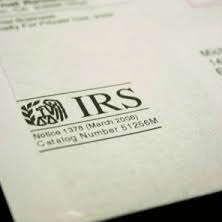
As taxpayers, we eagerly anticipate the arrival of our tax refund checks. But have you ever wondered how the IRS handles the distribution process? In this blog post, we’ll take a closer look at how the IRS distributes tax checks, ensuring that your hard-earned money reaches you promptly and securely.
- Electronic Filing and Direct Deposit: To expedite the process and ensure timely delivery, the IRS encourages taxpayers to file their tax returns electronically and opt for direct deposit. This method is not only faster but also more secure, as it eliminates the need for physical checks to be printed and mailed.
- IRS Refund Schedule: The IRS follows a refund schedule to process and distribute tax refunds. The timeframe can vary based on factors such as the complexity of your return, the volume of returns received, and any additional reviews or verifications required. The “Where’s My Refund?” tool on the IRS website allows you to track the status of your refund.
- Refund Options: Taxpayers have multiple options for receiving their refunds. In addition to direct deposit, you can choose to receive a paper check by mail or request a refund to be deposited onto a prepaid debit card. Each option has its own delivery timeline, with direct deposit being the fastest.
- Paper Check Mailing: For those who opt for a paper check, the IRS relies on the United States Postal Service (USPS) to deliver the refund. Once your refund has been processed, the IRS sends the check to the address provided on your tax return. It’s important to ensure that your mailing address is accurate and up to date to avoid any delays or misdeliveries.
- “Where’s My Refund?” Tool: To keep taxpayers informed about the status of their refund, the IRS provides the “Where’s My Refund?” tool on their website. By entering your Social Security number, filing status, and refund amount, you can track the progress of your refund and get an estimated date of delivery.
- Potential Delays: While the IRS strives to distribute refunds promptly, certain circumstances may cause delays. These can include errors on the tax return, discrepancies that require further review, or issues with verifying information provided. Additionally, factors such as peak filing seasons or exceptional circumstances (e.g., natural disasters) can affect processing times.
Understanding how the IRS distributes tax checks offers insight into the process and helps manage expectations. Electronic filing and direct deposit are recommended for faster and more secure refunds. By utilizing the “Where’s My Refund?” tool and ensuring accurate information on your tax return, you can stay informed about the status of your refund. Remember, patience is key during the processing period, and if you have any concerns or questions, reach out to the IRS for assistance.

